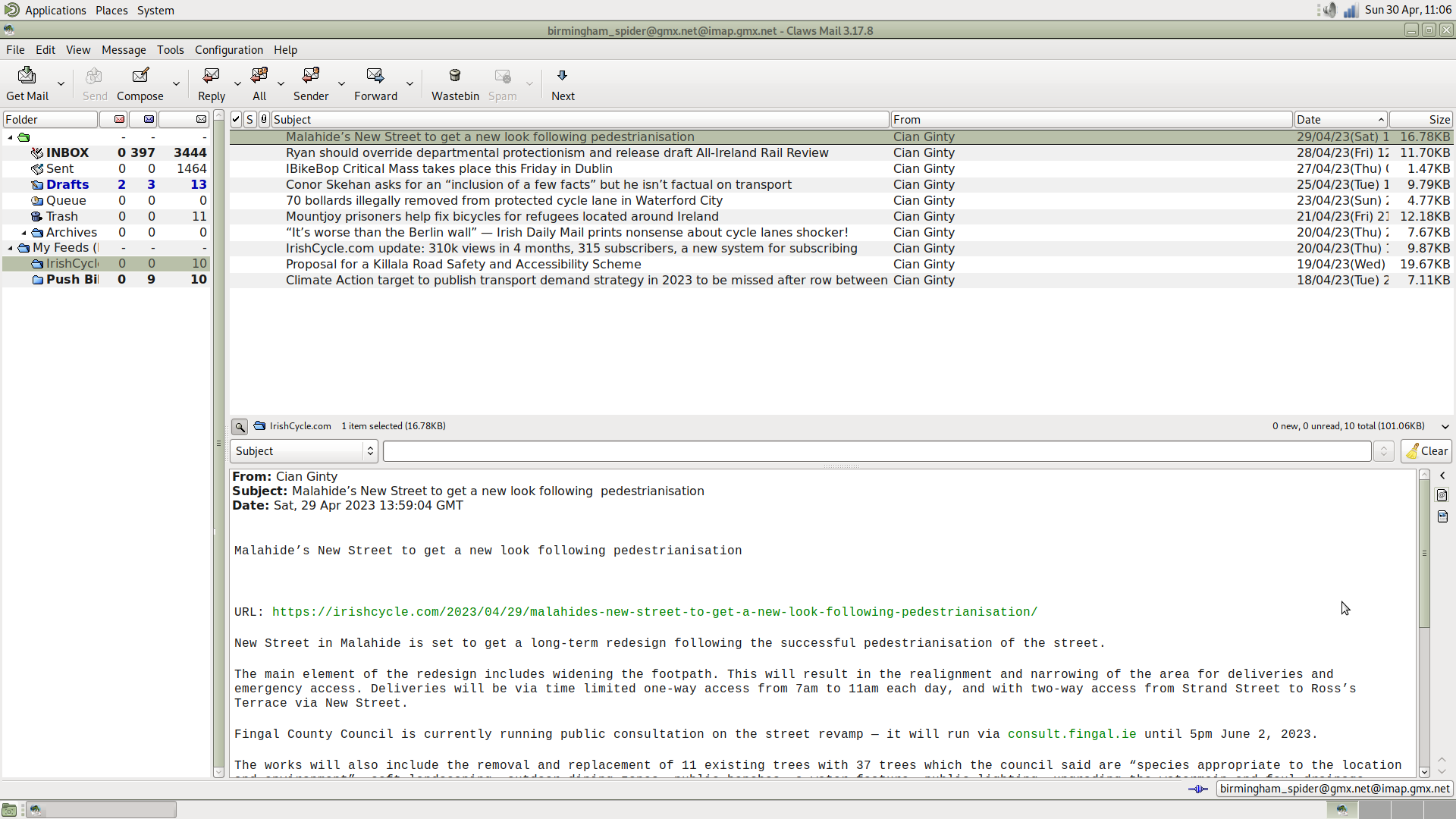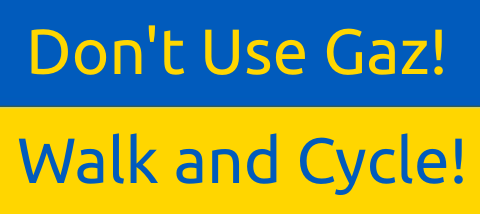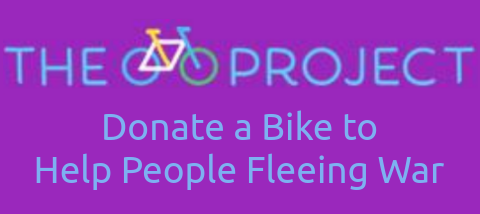
Two commonly used ways of following what Push Bikes is up to are Twitter/X and Facebook, but both are aggressively commercial platforms with less than charming leaders. That aggressive stance means they will do everything they can to get you to sign up, so they can learn everything they can about you, such as where you live, who your friends are, where you are right now, and what you're doing. Indeed Twitter/X is now completely inaccessible to people who don't have an account. RSS (Really Simple Syndication) news feeds are a way of avoiding all that, though admittedly with no means of feeding back comments. If all you want is notification of activity by sources of information, simply right click on the RSS icon on a part of a website that interests you, copy the link, and paste it into your feed reader. "My what?", you ask. You probably already have one, but don't know it.
You Probably Already Have a Feed Reader
Email Clients
The cross-platform (Windows, macOS, Linux, and FreeBSD) Thunderbird email client supports RSS out of the box. First use File...New...Feed Account to create a locally stored database, and then right click on the account, select Subscribe..., and paste in that link you copied. You may want to adjust the options, but you don't have to. You'll now receive updates in Thunderbird as if you had been sent an email. Apparently Microsoft Outlook does something similar.
The British Raspberry Pi was developed as a tiny, cheap, educational computer. It has proved to be immensely popular, and its use has gone way beyond what was originally intended. Teamed with a mouse, a keyboard, and a monitor, they can be used as a basic desktop computer that (at the time of writing) will come with an email client called Claws. To view RSS news feeds on a Raspberry Pi, add the RSSyl plugin to Claws. Alternatively, you can go hardcore (see section below on Minimalist Computing).
Web Browsers
The cross-platform (Windows, macOS, Linux, and Android) web browser Vivaldi has a feed reader built in. Alternatively, if you don't want to change your web browser, you can install an add-on.
Standalone Apps
For Android and Apple phones, you'll probably need to go to the relevant store and install an app. Just search on RSS and choose whatever cranks your tractor (personally I would look for lots of stars, zero cost, and no ads, and not allow anything that wants access to a suspiciously large part of my phone).
Apps are also available for other platforms, such as Newsboat for Linux.
Not Just for the Push Bikes Website
Lots of websites have RSS feeds, but some don't make it obvious (requiring an internet search or a lucky guess). For The Guardian, I had to do such a search, and discovered that whilst it isn't obvious from their web pages, the Guardian has a very sophisticated RSS feed system. Similarly for The Independent. The Financial Times also has a sophisticated RSS feed, but it's behind a paywall.
However, there are also websites that do not have a feed. This is no surprise in the case of Facebook and Twitter don't (who adopt the aggressive stance I referred to earlier), but surprisingly, neither does Reuters. This is not a massive problem all the while it can be solved with RSSHub. However, if using their service, please play nicely and cut the feed update rate right back (say, once a day), or install the application on your own computer.
RSS Feed for Push Bikes on Twitter / X
When Twitter was Twitter https://rsshub.app/twitter/user/pushbikesbcc worked, albeit a little unreliably. This stopped working after Elon Musk started ripping Twitter apart. Additionally there was a better alternative in the form of Nitter, but the door to that has now also been closed. Anything published on X will not be seen by anyone who doesn't have an X account. X has become a walled garden of the kind full of aggressive dogs.
Minimalist Computing
This section is primarily for people who want to have some fun trying to do the most for the least, but it also applies to people who don't like being bombarded with spurious graphics or who want to make use of old tech rather than dumping it.
The operating system Linux (the operating system of choice on the Raspberry Pi) can be operated via plain text terminals, using an interface known as the "command line interface (CLI)" or the "text user interface (TUI)". This can be done directly using a keyboard and monitor, or indirectly. For example, I have several Raspberry Pies tucked away around the house doing work for scientific and medical researchers (they also do occasional work for me). These have no monitor, keyboard, or mouse, but rather I log into them from a device that does have some kind of human interface. Either way, on one of them, mainly for fun, I have installed some text user interface applications, such as Alpine for email, w3m for web browsing, and Newsboat for RSS. The latter two work together, with Newsboat launching the full website page in w3m when I want it to. Below are some screenshots on various devices that show what it all looks like. Note the freedom from spurious clutter. And yes, that is an old Kindle Touch, "rooted" and installed with KUAL so I could have a wireless Linux terminal with a fantastic battery life.
There is a serious side to minimalist computing. Vast amounts of e-waste have been created as a result of support being discontinued. I have an ancient iPad that Apple stopped supporting long ago, but it still functions and has an excellent battery life. One entirely safe use for it is to log into my Raspberry Pi (which is right up to date because support in the Linux world is lengthy), and bring myself up to speed with the news. Minimalist computing reduces e-waste. The other serious side is experiencing the internet as it is experienced by people with sight loss. By looking at websites with Lynx, which does not display graphics, I can see that The Guardian have gone to the trouble of making their site accessible for people who have to live in a text only world, with hidden links to allow one to skip past things. And as the person responsble for the Push Bikes website, I can see that it too is pretty good when displaying only text. Some other websites are an utter mess in text only, and difficult to navigate. And guess which to websites don't support text only. Not that that doesn't stop one of them trying to palm a cookie.
Viewing RSS News Feeds Using Thunderbird

Viewing RSS News Feeds Using Claws/RSSyl

Newsboat RSS Unread News Aggregation

Random List Of News Feeds

Push Bikes Website Viewed with Lynx

Push Bikes Website Viewed with w3m

Push Bikes RSS News Feed on a Rooted Kindle Touch



